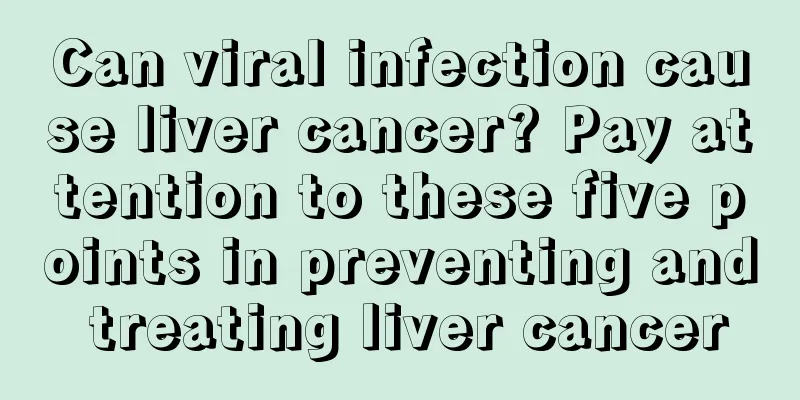What are the symptoms of lung cancer? Common clinical symptoms of lung cancer

|
The occurrence of lung cancer can make patients feel panic, which is not conducive to treatment. After discovering lung cancer, patients should maintain a good attitude and actively cooperate with doctors for treatment. At the same time, in order to achieve better treatment results, symptomatic treatment is necessary, so patients should have a better understanding of the symptoms of lung cancer. There are usually no symptoms in the early stages. Almost two-thirds of lung cancer patients are already in the advanced stage (stage III or IV) when they seek medical treatment. 95% of patients have clinical examination results. Primary tumors, metastatic tumors, systemic symptoms or tumor-associated symptoms can all be the patient's first symptoms. The first symptom caused by the primary tumor accounts for 27%. The symptoms are related to the location of the primary tumor. Central lung cancer is manifested by irritating dry cough, breathlessness, repeated pneumonia in the same location, hemoptysis or asthma, recurrent laryngeal nerve, phrenic nerve compression symptoms or superior vena cava compression syndrome. Peripheral tumors are more common in symptoms such as chest pain, breathlessness or pleural effusion. Large peripheral lesions, central necrosis, and cavities eventually present similar manifestations to lung abscesses. Distant metastatic lesions cause the first symptoms in 32% of cases. Common distant metastatic sites include: lymph nodes, adrenal glands, liver, bones, lungs, brain and chest wall, which produce some corresponding symptoms, indicating that lung cancer has reached the late stage, such as: tumors near the mediastinum can invade the phrenic nerve, causing ipsilateral diaphragm paralysis, and under fluoroscopy, the diaphragm position is elevated and abnormal respiratory movements are shown; invade the ipsilateral recurrent laryngeal nerve, causing hoarseness, ipsilateral vocal cord paralysis and fixation in the median position; compress the superior vena cava, causing edema of the head, face and upper limbs, and venous distension; invade the pleura, causing a large amount of blood in the pleural cavity. Fluid accumulation, aggravating the symptoms of shortness of breath, or directly invade the chest wall, causing severe chest pain; lung cancer at the apex of the upper lobe is located at the entrance of the thorax, also known as superior pulmonary sulcus cancer, which can invade and compress the brachial plexus, cervical sympathetic ganglia, and subclavian artery and vein, producing a series of special symptoms, such as numbness and pain in the ipsilateral upper limb, which gradually increases and becomes difficult to tolerate; atrophic changes in muscles and skin, distension and edema of the upper limb veins; and cervical sympathetic nerve syndrome such as ipsilateral ptosis, pupil constriction, enophthalmos, and absence of sweat on the face. 10% to 20% of lung cancer patients have tumor-associated syndromes. The most common symptoms are small cell lung cancer and squamous cell carcinoma. Common tumor-associated syndromes include pulmonary osteoarthritis syndrome (clubbing, bone and joint swelling and pain, periosteal hyperplasia, etc.), SIADH (syndrome of inappropriate antidiuretic hormone secretion), hypercalcemia, etc. There are also Cushing's syndrome, myasthenia gravis or male breast enlargement. About 16% of patients have neuromuscular symptoms, and some patients have skin diseases such as scleroderma and acanthosis nigricans. The clinical manifestations of lung cancer are closely related to the location, size, compression, invasion of adjacent organs, and metastasis of the tumor. Tumors grow in larger bronchi, often causing irritating coughs. Tumor enlargement affects bronchial drainage, and secondary lung infection may cause purulent sputum. Another common symptom is bloody sputum, usually with blood spots, blood streaks, or intermittent hemoptysis. Even one or two bloody sputums in some patients are of great reference value for diagnosis. Some patients may experience chest tightness, shortness of breath, fever, and chest pain due to large bronchial obstruction caused by tumors. When advanced lung cancer compresses adjacent organs and tissues or metastasizes to distant sites, it may cause: ①Compression or invasion of the phrenic nerve, causing paralysis of the ipsilateral diaphragm. ②Compression or invasion of the recurrent laryngeal nerve, causing vocal cord paralysis and hoarseness. ③ Compression of the superior vena cava causes venous distension in the face, neck, upper limbs and upper chest, subcutaneous tissue edema, and increased venous pressure in the upper limbs. ④ Invasion of the pleura may cause pleural effusion, which is mostly bloody. ⑤ The cancer invades the mediastinum and compresses the esophagus, which may cause difficulty in swallowing. ⑥ Upper lobe lung cancer, also known as pancoast tumor or superior pulmonary sulcus tumor, can invade and compress organs or tissues located at the upper opening of the thorax, such as the first rib, supraclavicular artery and vein, brachial plexus, cervical sympathetic nerves, etc., causing chest pain, distension of the jugular vein or upper limb veins, edema, arm pain and upper limb movement disorders, ptosis of the upper eyelid on the same side, miosis, enophthalmos, anhidrosis on the face and other cervical sympathetic nerve syndromes. A small number of lung cancers, due to the production of endocrine substances by the tumor, clinically present non-metastatic systemic symptoms such as osteoarthritis (clubbed fingers, joint pain, periosteal hyperplasia, etc.), Cushing syndrome, myasthenia gravis, male breast enlargement, multiple muscle neuralgia and other extrapulmonary symptoms. These symptoms may disappear after the removal of lung cancer. When the above symptoms appear in your body, you should go to the hospital for examination in time. Do not ignore them just because some symptoms are similar to other diseases. This will cause you to miss the best time to treat lung cancer. For lung cancer, the treatment effect of early cases is still relatively good. |
Recommend
The difference between moisturizer and lotion
Moisturizer and lotion look similar, but they are...
What is the best effect achieved after radiotherapy and chemotherapy for stage 2B cervical cancer
Most patients survive within 1-2 years, and those...
Listen to your body and learn that the five internal organs have very different methods of detoxification
The fast pace of life and irregular diet have cau...
What causes nasopharyngeal cancer and how can it be prevented?
How is nasopharyngeal cancer caused? How can it b...
What is clown phobia
Coulrophobia refers to the fact that clowns will ...
What are the effects of Sophora flavescens ointment
The main effects of Sophora flavescens ointment a...
What are the functions of the right brain
The right brain is an important part of the brain...
Congenital patellar dislocation
The patella refers to the knee joint area of th...
Several common early symptoms of cardia cancer
Among the many types of cancer, cardia cancer is ...
What are the symptoms of insufficient blood supply to the heart?
The heart has a unique ability to circulate blood...
What should I do if the mimosa leaves are dry?
Growing flowers at home can not only make the roo...
Is it necessary to beautify the grout of floor tiles?
When building a house, the issue of laying floor ...
Tips on how to remove cysts, common methods recommended to you
Traditional Chinese medicine can effectively alle...
What are the dietary taboos for colon cancer
In the early stages of colon cancer, there is no ...
Homemade Conditioner
Having smooth and beautiful long hair is very imp...









